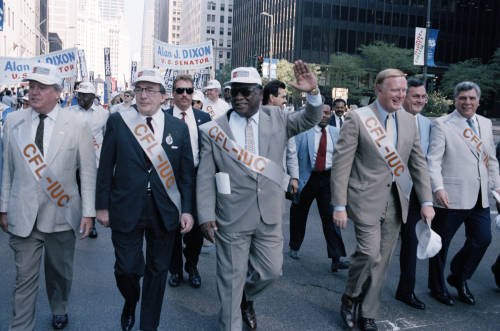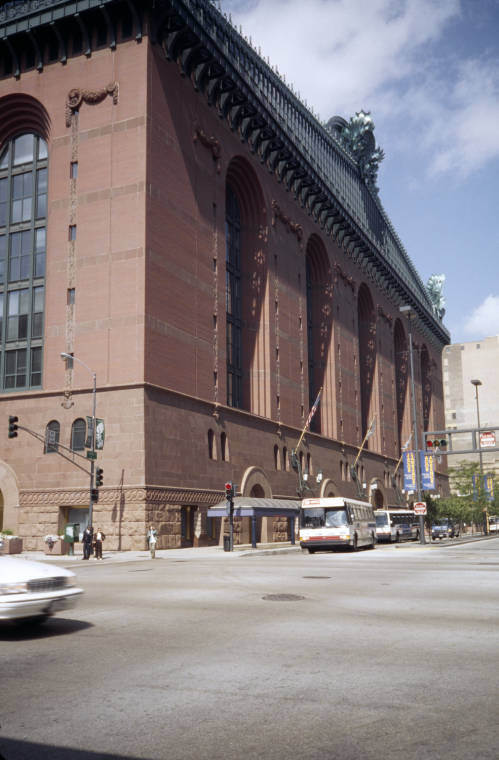Chicago Mayor Washington: Legacy
Upon being elected, Washington stated that he would like to be mayor for twenty years. There is little doubt he would have had the support he needed to do just that. However, he ended up only serving four years; in 1987, months after being reelected, Washington passed away while at work in City Hall.
Chicago mourned the loss of Harold Washington deeply; he had represented the city and those who lived there in a way that had never happened before. Despite the “Council Wars” during Washington’s time in office (in which a number of white members of Chicago’s City Council worked to block many of his efforts to improve the political landscape), he had many historical accomplishments. He took action to diversify the city government and city contracts, hiring minorities and women in administrative positions. Other lasting efforts he made include helping to pass the Shakman Decrees, allowing for more widespread transparency with his Freedom of Information executive order, and working to have Dr. Martin Luther King, Jr. Day recognized as a holiday in Illinois.
Washington’s legacy also includes a number of buildings that bear his name, from schools to museums. The Harold Washington Wing was added to the DuSable Museum in 1993. Since the mid 1900’s, the DuSable Museum has been dedicated to preserving and celebrating Black art, history and culture. To this day, it provides educational programs to patrons via exhibits, lectures, and various festivals.
According to those who knew him, Washington was an avid lover of books; with this in mind, along with his dedication to community-serving initiatives, it is no wonder that he was such a strong supporter of Chicago’s public library system. The city’s main library design, created by Thomas Beeby, was chosen from a variety of other entries in a design competition devised by Washington in 1987. The building was opened to the public on October 7th, 1991 and bears the mayor’s name.
These two buildings, as well as an elementary school and community college, serve as reminders of Washington’s impact. The less-tangible changes he brought about, such as visibility and transparency, remain as well. In Chicago, Harold Washington stood for those who were oppressed and made a tireless effort to change the way politics were conducted in the city. On a larger scale, he influenced other Black and minority individuals to take similar steps, inspiring future generations of politicians.


